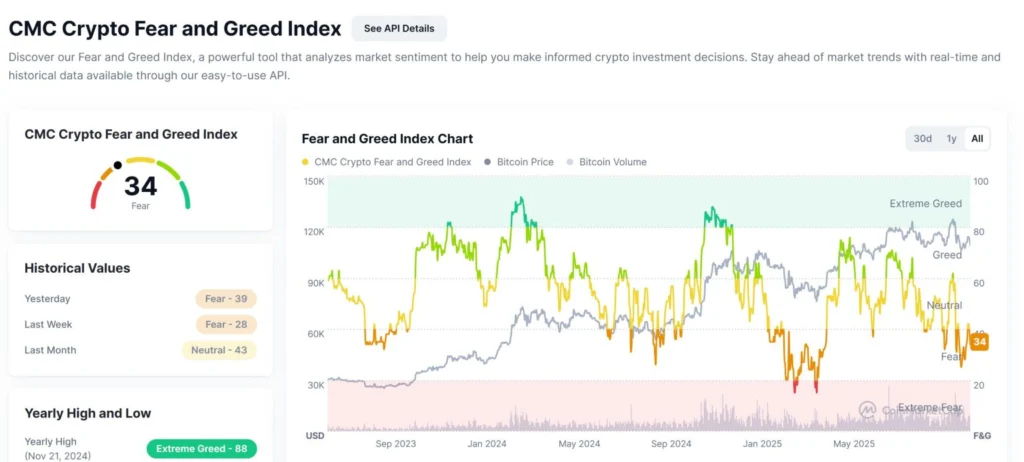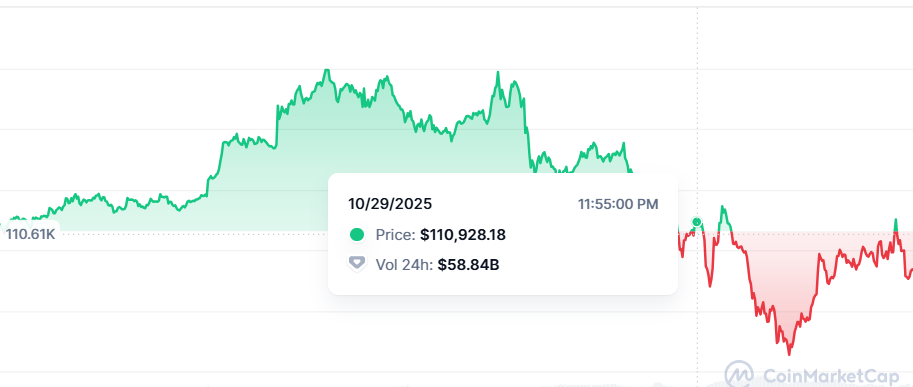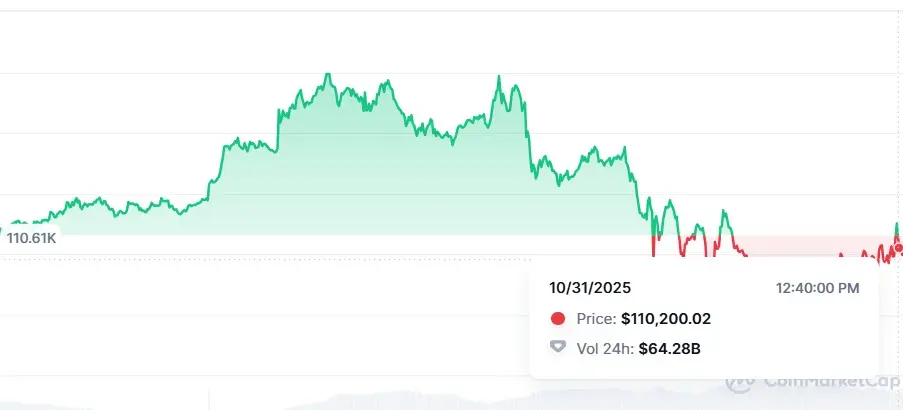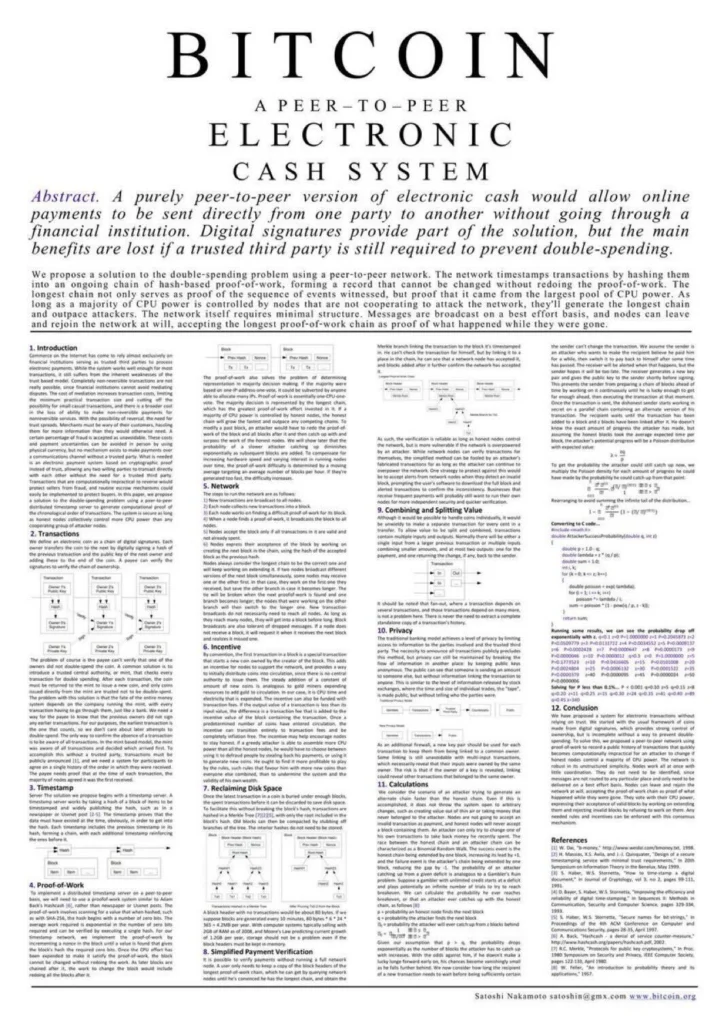
October ends as a month of striking contrasts. While the U.S. and China hinted at a trade truce and the Federal Reserve made its first rate cut after months of restrictive policy, the cryptocurrency market experienced a roller coaster: Bitcoin surpassed $120,000, Ethereum reached its highest price in two weeks, and shortly after, both faced a correction of more than 3%.
Amid this volatile environment, one move stood out: Klever Blockchain introduced one of the year’s most ambitious updates.
More than just the end of a cycle, October marks a turning point between the speculative past and the functional future of the crypto world — where technology and trust once again become the main drivers of growth.
Klever Launches KVM: A New Era of Smart Contracts on the Blockchain

Held on October 28, 2025, the launch of the Klever Virtual Machine (KVM) marks one of the most significant milestones in the history of Klever Blockchain, transforming the network into a complete platform for smart contracts, dApps, and programmable tokens.
What Is the Klever Virtual Machine (KVM)?
The Klever Virtual Machine (KVM) is the new smart contract execution environment on the Klever Blockchain.
Developed in Rust and compiled into WebAssembly (WASM), it delivers security, scalability, and efficiency in building decentralized smart contracts and dApps.
With the v1.7.14 update, officially released on October 28, 2025, the Klever network now supports:
- Native Smart Contracts
- Semi-Fungible Tokens (SFTs)
- SDKs and VS Code integration
- Ethereum Bridge (ERC-20/USDC)
- Contract Area panel on KleverScan, enabling on-chain transparency and auditing
Why the KVM Launch Matters
The introduction of the Klever Virtual Machine redefines Klever Blockchain’s role in the crypto industry — evolving it from a simple transaction network into a full ecosystem of decentralized applications.
- Expanded Ecosystem: Developers can now create dApps, games, and custom tokens directly on the Klever network.
- High Performance & Security: Built with Rust and WebAssembly, KVM ensures fast execution, low resource consumption, and secure memory isolation.
- Developer-Centric Tools: Klever provides SDKs, a VS Code extension, and transparent smart contract tracking via KleverScan.
- True Interoperability: Integration with Ethereum (ERC-20) and upcoming bridges to TRON and USDT will connect multiple blockchain networks.
AWS Faces Global Outage, Disrupting Exchange Services

On October 20, 2025, Amazon Web Services (AWS) experienced a global outage that directly affected several cryptocurrency platforms, including Coinbase, Robinhood, Mercado Livre, and dozens of other companies relying on Amazon’s cloud infrastructure.
More than 500 digital services suffered from slowdowns or complete downtime.
Impact on Cryptocurrency Services
Coinbase reported that some users faced login issues and stuck transactions, but assured customers that “all funds remain safe.”
Robinhood, the U.S. investment platform, also reported temporary interruptions in crypto and stock trading.
Other affected platforms included:
- Mercado Livre, which experienced instability in its marketplace and Mercado Pago payment service;
- OpenSea, the NFT marketplace;
- On-chain data monitoring platforms and APIs used by dApps and decentralized exchanges (DEXs).
According to AWS, the issue was linked to DynamoDB, one of its core database systems, and full service restoration took about three hours.
Trade Truce Between the U.S. and China

On October 30, 2025, during the APEC Summit in Busan, U.S. President Donald Trump and Chinese leader Xi Jinping announced a one-year trade truce.
The agreement aims to ease tariff escalation, reduce pressure on global supply chains, and stabilize international markets — particularly in the technology, clean energy, and agribusiness sectors.
Key Points of the U.S.–China Agreement
- Tariff reduction: The U.S. agreed to lower average tariffs on Chinese goods from 57% to around 47%.
- Suspension of restrictions: China temporarily lifted export controls on rare earth elements and semiconductors.
- Soybean purchases: Beijing committed to buying 12 million tons of U.S. soybeans in 2025 and 25 million tons annually through 2028.
- Technology policy review: Both nations agreed to resume talks on intellectual property and AI regulation.
Why the Trade Truce Was Necessary
Since 2024, trade tensions between the U.S. and China had intensified, with new tariffs, export restrictions, and technological barriers.
This deadlock threatened manufacturing, agricultural production, and the global flow of chips and critical minerals.
The truce is seen as an effort to prevent further disruptions to global supply chains and to restore investor confidence.
Economic Impacts of the U.S.–China Truce
1. Relief for U.S. Agribusiness
The resumption of soybean imports provides a boost to U.S. farmers, who had been struggling with high inventories and tight profit margins.
2. Improved Global Market Sentiment
Following the announcement, Asian and European stock markets posted slight gains, while Bitcoin recovered part of its previous week’s losses, according to CryptoQuant and Glassnode.
3. Lower Supply Chain Risks
The suspension of rare-earth export restrictions benefits companies in AI, clean energy, and defense, all of which rely on these strategic materials.
Limitations and Future Challenges
Despite being a diplomatic breakthrough, the truce does not resolve the structural conflicts between the two powers.
Outstanding issues include:
- Chinese state subsidies
- Forced technology transfers
- Disputes over Taiwan and cybersecurity
Economists describe the agreement as “a tactical pause, not a definitive solution,” according to the Council on Foreign Relations.
Strategic Analysis: What This Truce Teaches Us
The truce between the U.S. and China is a clear example of economic diplomacy as a tool for global positioning.
It shows that trade agreements go far beyond tariffs — they are about power, influence, and access to strategic markets.
How U.S.–China Tensions and Fed Decisions Impact the Cryptocurrency Market

The cryptocurrency market is highly sensitive to global macroeconomic conditions.
In recent weeks, trade tensions between the United States and China, combined with expectations surrounding Federal Reserve (Fed) interest rate cuts, have directly affected the price of Bitcoin (BTC) and other digital assets.
These factors determine risk appetite and market liquidity, influencing institutional inflows, ETF performance, and investor behavior.
Bitcoin fluctuated between $109,000 and $115,000 as new political and economic developments unfolded.
When Global Risk Rises, Bitcoin Feels It
The ongoing dispute between the U.S. and China — involving tariffs, export restrictions, and semiconductor control — fuels uncertainty about global economic growth.
On October 14, for example, Bitcoin fell by around 2.1% after reports of new trade barriers.
When investors fear a slowdown, they tend to reduce exposure to high-risk assets like cryptocurrencies and shift to government bonds or the U.S. dollar.
Conversely, when there are signs of easing — such as the resumption of dialogue between the two powers — the market regains momentum.
On October 13, Bitcoin recovered to $115,000 following signs of a trade truce.
Interest Rate Cuts and the “Liquidity Effect” in Crypto Markets
Higher interest rates make capital more expensive, reducing flows into non-yielding assets like Bitcoin and Ethereum.
When the market expects the Fed to cut rates, risk appetite grows — and Bitcoin tends to rise.
However, in October, Fed Chair Jerome Powell indicated that further rate cuts are not guaranteed before year-end, cooling market optimism.
Following his statement, Bitcoin dropped from $115,000 to $109,000, and the total crypto market capitalization fell below $4 trillion.
How the Fed and China Interact in Bitcoin’s Price Movements
When the Fed signals lower rates and U.S.–China tensions ease, the global environment becomes more favorable for risk-taking — driving Bitcoin’s price higher.
But when the Fed’s tone hardens or trade relations deteriorate, the crypto market quickly loses traction.
For instance:
- Positive combo (liquidity + truce) → BTC and ETH rally.
- Negative combo (tight policy + conflict) → profit-taking and market pullback.
This correlation shows that Bitcoin now behaves like a macro asset, responding to interest rates, inflation, and global policy decisions — not just blockchain-related factors.
Cryptocurrencies Drop 3% After Rally

Source: Crypto News
On October 30 2025, the global cryptocurrency market capitalization fell around 3.0%, dropping from US$3.99 trillion to US$3.78 trillion, according to CryptoNews.
- Bitcoin (BTC) fell 3.5%, trading near US$109,373.
- Ethereum (ETH) declined 3.6%, reaching US$3,868.
- The Crypto Fear & Greed Index slipped to 34 (“Fear”), reflecting growing investor caution.
The drop followed ETF outflows, cautious reaction to Federal Reserve policy, and renewed regulatory pressure in Australia.
ETF Outflows Signal Institutional Cooling
Institutional capital flows remain one of the strongest drivers of crypto market sentiment.
Data from CryptoNews (Oct 30 2025) show:
- Bitcoin spot ETFs registered US$470.7 million in outflows.
- Ethereum spot ETFs lost around US$81.44 million.
- Meanwhile, Solana (SOL) stood out with US$47.94 million in inflows — the only major bright spot.
Such ETF outflows often trigger broader selling pressure, as they reflect reduced exposure by institutional and large-cap investors.
Federal Reserve Policy: Rate Cuts and Market Reaction
The Federal Reserve announced a 25 basis-point interest-rate cut and confirmed plans to end quantitative tightening (QT) in December.
While an end to QT typically signals more liquidity and should favor risk assets like Bitcoin and Ethereum, markets reacted with caution instead of enthusiasm.
This paradox suggests that traders are still assessing whether the Fed’s actions mark a lasting shift toward a more supportive monetary stance — or just a pause before further tightening.
Investor Sentiment Turns Fearful
The Fear & Greed Index dropping to 34 marks a significant shift in investor psychology:
- One month ago: 43 (“Neutral”)
- Yesterday: 39 (“Fear”)
- Today: 34 (“Fear”)
This drop mirrors falling trading volumes and reduced retail participation, a pattern often seen during consolidation phases following sharp rallies.
Regulatory Pressure Adds to Uncertainty
Regulation resurfaced as a theme after AUSTRAC, Australia’s financial intelligence agency, fined CryptoLink — a crypto-ATM operator — A$56,340 (~US$37,000) for anti-money-laundering (AML) violations.
Although minor in monetary terms, such enforcement actions reinforce the perception of heightened regulatory scrutiny, which can temporarily weigh on investor confidence and market momentum.
Broader Market Context
The current retracement follows weeks of gains across major cryptocurrencies, driven by optimism around ETF approvals and institutional adoption.
However, as Bitcoin approached US$115 k and Ethereum surpassed US$4 k, many traders opted to realize profits.
Altcoins, still trading 30–40% below their cycle highs, remain vulnerable to liquidity fluctuations and investor rotation toward safer assets like BTC.
Bitcoin Pulls Back After Jerome Powell’s Speech

Source: coinmarketcap
Bitcoin (BTC) recorded a slight decline following a speech by Federal Reserve (Fed) Chair Jerome Powell on October 29, 2025.
Even after a 0.25 percentage point rate cut — lowering the benchmark range to 3.75%–4.00% — the Fed’s cautious tone triggered profit-taking and a temporary pullback in the crypto market.
Fed Cuts Rates, but Powell’s Remarks Temper Market Optimism
During the press conference, Powell stated that additional cuts in December are not guaranteed, cooling investor enthusiasm.
Bitcoin, which had been trading near $113,000, fell to around $110,000 before stabilizing at $111,600 by the end of the day.
This move reflects the typical reaction of risk markets to hawkish rhetoric — a tougher stance on inflation — even when rates are lowered.
Impact on Bitcoin Price and Analyst Insights
Despite the short-term correction, analysts interviewed by Portal do Bitcoin see the medium-term outlook as structurally positive.
- Rony Szuster, Head of Research at Mercado Bitcoin, noted that the end of the Fed’s quantitative tightening (QT) cycle should benefit liquidity-driven assets such as Bitcoin and Ethereum.
- Theodoro Fleury, portfolio manager at QR Asset Management, explained that while the cut was already priced in, Powell’s tougher tone caught part of the market off guard.
- Sarah Uska, analyst at Bitybank, highlighted on-chain data showing a decline in BTC reserves on exchanges — a signal of lower selling pressure and growing long-term accumulation.
What the Fed’s Decision Reveals About Market Conditions
Bitcoin’s drop after Powell’s comments does not indicate a trend reversal but rather a pause amid macroeconomic uncertainty.
Analysts emphasize that:
- Global liquidity is expected to improve over the next quarters with the end of QT.
- Bitcoin and Ethereum ETFs continue to see strong inflows, confirming institutional participation.
- The decline in BTC exchange reserves suggests a persistent “hold” mentality among investors.
These elements support a medium-term bullish outlook, with potential for renewed momentum later in the year if the Fed confirms further monetary easing.
Conclusion: Short-Term Volatility, Long-Term Fundamentals
Bitcoin’s decline following Powell’s remarks represents a temporary adjustment, not a structural shift.
The macroeconomic environment remains favorable for digital assets, and the market is already pricing in additional rate cuts for 2026.
Meanwhile, declining BTC reserves, growing ETF adoption, and the end of quantitative tightening reinforce a scenario of rising liquidity and institutional confidence in the crypto space.
Bitcoin and Ethereum Plunge After Trump–Xi Meeting

On October 30, 2025, the cryptocurrency market faced a sharp correction following the meeting between Donald Trump and Xi Jinping, which ended without any concrete progress.
Bitcoin (BTC) fell about 4%, dropping below $108,000, while Ethereum (ETH) declined over 5%, trading around $3,782.
Other cryptocurrencies were also hit: Solana (SOL), XRP, and Dogecoin (DOGE) fell by an average of 6% over the past 24 hours.
According to Portal do Bitcoin (October 2025), futures contract liquidations exceeded $1.1 billion, mostly concentrated in long positions — bets that anticipated price increases.
- Bitcoin: ~$500 million liquidated
- Ethereum: ~$250 million liquidated
- Various altcoins: ~$350 million liquidated
Why Did the Market Drop After the Trump–Xi Meeting?
The combination of political disappointment and monetary uncertainty triggered the sell-off.
1. Lack of Trade Progress
The meeting between Trump and Xi, which many hoped would signal relief in economic tensions between the U.S. and China, ended with no agreements or joint statements.
The outcome dampened appetite for risk assets — including cryptocurrencies.
2. Federal Reserve Statements
Fed Chair Jerome Powell indicated that additional rate cuts are not guaranteed, contradicting market expectations for more accommodative policy.
With higher interest rates, the opportunity cost of holding volatile assets like Bitcoin and Ethereum increases.
3. Profit-Taking After Recent Highs
Bitcoin had reached $126,000 earlier in the month — its all-time high.
The lack of new bullish catalysts prompted profit-taking and technical correction, leading BTC to drop roughly 15% from its peak.
4. Cascade of Liquidations
Excessive leverage in the futures market triggered mass forced liquidations.
As prices fell sharply, leveraged long positions were automatically closed, amplifying the downward move and pressuring the spot price even further.
What This Means for the Crypto Market
- High Correlation With Macroeconomic Events: The reaction shows that Bitcoin still behaves as a risk asset, sensitive to global politics and interest rate decisions.
- Risk Management Is Essential: Leveraged traders suffered heavy losses within hours.
- Corrections Are Part of the Cycle: After strong rallies, markets tend to enter consolidation phases.
- Liquidity and Self-Custody Matter: Periods of high volatility highlight the importance of keeping assets under self-custody, outside exchanges — using wallets like Klever Wallet for better control and security.
Bitcoin Faces Its First “Red October” in Seven Years: Here’s What’s Behind the Drop

Source: Finance Magnates
In October 2025, Bitcoin (BTC) marked 17 years since the release of its White Paper, but the month ended in decline — something that hadn’t happened since 2018.
According to data from CoinGlass and Cointelegraph, Bitcoin posted a monthly loss of around 3% to 4%, breaking the long-standing “Uptober” streak.
Since 2013, October has historically been Bitcoin’s most profitable month, averaging 19%–22% gains. In 2025, however, that pattern was broken — marking the first “Red October” in seven years.
Bitcoin’s Decline: Main Reasons
1. Profit-Taking by Long-Term Holders
On-chain data from Glassnode shows that long-term investors — those who bought BTC between $70,000 and $96,000 — began selling after the $126,000 peak earlier in October.
This selling pressure weakened the rally’s momentum and triggered a natural correction after months of appreciation.
2. Lower Institutional Inflows via ETFs
Reports from Crypto Sale indicate that Bitcoin ETF inflows fell from 2,500 BTC/day to less than 1,000 BTC/day.
With reduced institutional demand, the market lost the “fuel” needed to sustain further gains.
3. Macroeconomic and Geopolitical Uncertainty
Risk aversion rose amid renewed U.S.–China trade tensions and uncertainty over Federal Reserve rate cuts.
Despite early optimism in the month, the lack of clarity in monetary policy pushed investors toward more stable assets.
4. The “Uptober” Narrative Breaks
For seven years, the market relied on the belief that “October always goes up.”
Breaking that narrative has a psychological impact, reducing risk appetite and encouraging caution, especially among short-term traders.
What This Means for the Crypto Market
Despite the correction, analysts view the move as healthy within a broader bullish cycle.
Other indicators — such as the growth in active addresses, on-chain volume, and the strength of stablecoins — still support a positive long-term outlook.
This slowdown shows that Bitcoin remains sensitive to macroeconomic factors, but it also reinforces its market maturity: the asset is no longer driven solely by hype, but by the balance between liquidity, supply, and real demand.
ETF Inflows and the Broader Market Signal
The renewed inflows into Bitcoin and Ethereum ETFs signal a return of institutional risk appetite.
This suggests that large investors once again see value in digital assets, especially amid regulatory stability and expectations of U.S. rate cuts.
Still, caution remains warranted — analysts point out that inflation, trade tensions, and the U.S. elections continue to influence crypto prices.
The latest ETF inflows confirm that the crypto market remains mature and attractive for institutional investors, while retail investors should focus on education, self-custody, and long-term perspective.
As the market waits to see whether the bull run is truly back, one thing is clear: demand for valuable, infrastructure-based crypto assets is rising again.
Bitcoin Rebounds to $110,000, Entering a Critical Liquidity Phase

Source: coinmarketcap
After dipping to $106,000, Bitcoin (BTC) rebounded to around $109,813 (~R$593,000) on Friday, October 31.
The move followed the Federal Reserve’s 0.25% rate cut, along with signals that rate reductions would end in 2025 and a new trade agreement between the U.S. and China.
Key Highlights
- Bitcoin ETFs saw $197.5 million in outflows, reflecting investor caution.
- Analysts from Bitget and Derive noted parallels with 2019, but with Bitcoin now central to global liquidity flows.
- The current 4% interest rate creates “pent-up energy” that could flow into risk assets if another round of cuts occurs.
- Experts project that the $105,000–$115,000 range is critical — a breakout could pave the way toward $200,000 by Q3 2026.
Macroeconomic Context
The Fed’s policy shift is viewed as a trigger for a new liquidity cycle, favoring risk assets like Bitcoin.
However, analysts warn of short-term volatility, with potential 10–15% corrections before a sustained recovery takes hold.
Bitcoin White Paper Turns 17: The Birth of Decentralized Digital Money

On October 31, 2008, Satoshi Nakamoto published the white paper “Bitcoin: A Peer-to-Peer Electronic Cash System” — the document that gave birth to Bitcoin and introduced the modern concept of blockchain.
In just nine pages, it presented a revolutionary solution to the problem of double spending without the need for financial intermediaries.
Released in the midst of the global financial crisis, the paper proposed an alternative built on mathematical trust and decentralization. Three months later, in January 2009, Satoshi mined the genesis block, marking the official start of the Bitcoin network.
Key Ideas from the White Paper
- Peer-to-peer system: direct transactions between users, without banks.
- Proof-of-Work: block validation through computational power, preventing fraud.
- Digital signatures: secure authentication of every transaction.
- Public and immutable ledger: all operations recorded on a transparent ledger — the blockchain.
Why the White Paper Still Matters
Seventeen years later, Satoshi’s text remains both a technical and philosophical reference.
It inspired thousands of blockchain projects and established self-custody as a cornerstone of financial freedom in the digital age.
The Ongoing Impact
Today, Bitcoin is recognized as the most secure digital asset in the world, increasingly adopted by banks, governments, and institutional investors.
The publication of the white paper marked the beginning of an era that redefined trust, digital scarcity, and the very concept of value.
North Korea Stole $2.84 Billion in Crypto — and the World Is Starting to React

Source: Fortune
A recent report by the Multilateral Sanctions Monitoring Team (MSMT) revealed that North Korea diverted approximately $2.84 billion in cryptocurrencies between January 2024 and September 2025, according to data published by Portal do Bitcoin.
Of this total, $1.65 billion was stolen in 2025 alone, with the Bybit exchange hack in February being one of the most notable incidents.
Hackers and Remote Workers Funding the Regime
In addition to direct attacks on exchanges and custody providers, the report highlights that North Korea employs overseas IT workers to generate illicit revenue — a strategy that violates UN sanctions.
The funds are then funneled into military programs, including the development of weapons and nuclear technology.
Sophisticated Modus Operandi Targeting Custody Wallets
North Korea’s cyberattacks have targeted exchanges, private key providers, and DeFi platforms, combining social engineering, digital infiltration, and asset laundering via mixers.
The report notes that the technical sophistication of these operations is now comparable to China’s and Russia’s cyber programs, raising red flags across the entire crypto ecosystem.
Geopolitical Consequences and Global Response
The use of crypto assets to finance weapon programs turns the blockchain into an alternative financial tool for sanctioned states.
Despite the inherent transparency of blockchain transactions, complex laundering networks still make it possible to obscure the origin of stolen funds.
In response, international authorities and cybersecurity firms are enhancing global cooperation, on-chain tracking, and digital forensic analysis tools to counter this growing threat.


